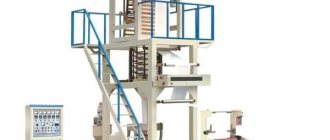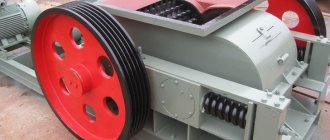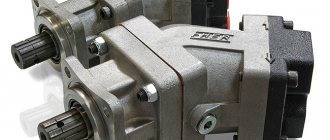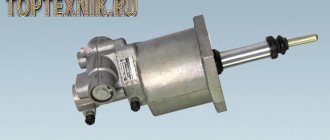Back in the mid-1800s, people and companies were desperately trying to find the most efficient way to transport perishable goods. For many years, trains were the only option for transporting such goods.
The first ever refrigerated truck appeared in 1938, when American Frederick McKinley Jones invented a portable air-cooling device for use on trucks. In 1940, he received a patent, found a business partner, and already in 1949 he built a company with a multimillion-dollar turnover. Jones's invention of the portable refrigeration unit was important during World War II. This made it possible to deliver various perishable goods to military hospitals and to the front.
And yet a modern refrigerator - what it is, what they are like and what they are used for. Let's explore the world of refrigerated trucks, find out how they work and why they are so important.
What are refrigerated trucks?
Refrigerated trucks are uniquely designed trucks or trailers (semi-trailers) designed to transport perishable goods such as fruits, vegetables, seafood, meat, etc.
In fact, refrigerated trucks are similar in appearance to standard trucks, but the design of a refrigerated truck has several important differences:
- It consists of three elements: its own chassis adapted for mounting the panel and a semi-trailer or van body with a refrigeration unit.
- The walls, ceiling and floors are sheathed with metal (aluminum and stainless steel) or fiberglass.
- The insulators are polyurethane foam and aluminum foil with layers of air. This not only improves insulation, but also prevents product odors from being absorbed into the floors and walls.
Refrigerated trucks you can buy today
Based on temperature they are divided into the following groups:
- 1st category, intended for the delivery of refrigerated goods (at temperatures up to plus 1 degree);
- 2nd category, for the delivery of frozen goods (from minus 1 to minus 20 degrees);
- multi-temperature installations (multi-compartment, with different temperatures in each);
- combined - with the ability to install an environment inside the van from plus 10 to minus 20 degrees.
By type of drive there are:
- with electric drive (for small compartments);
- driven from the power unit (for volumetric compartments);
- with water cooling.
By body length (for container installations):
- 6 meters;
- 12 meters;
- 13.5 meters.
By weight of transported cargo:
- light 1000 – 3000 kg (local transportation);
- average 3000 – 5000 kg (regional);
- heavy 5000 or more (international).
Structurally, automobile refrigeration units are divided into several types: a van or container, as well as a trailer, semi-trailer or truck on a chassis mounted on a truck.
Where are they used?
It may come as a surprise, but “perishable goods” is a very broad term that includes more than just fresh fruits, vegetables, meat, frozen and dairy products. Today's truck and trailer refrigeration systems also maintain ideal temperatures and humidity for other valuable cargo to ensure it arrives safely at its final destination.
Driven by regulatory requirements and economic considerations, the cold chain has expanded. Now, among other things that are transported in refrigerators, climate control is required:
- Pharmaceuticals. Commonly used medications, such as insulin and seasonal flu vaccine, must be transported and stored at the correct temperature.
- Expensive tobacco products require strictly controlled temperature levels to maintain freshness and quality.
- Fine art and antiques. Climate control is vital when transporting art, antiques, collector cars and other valuable items. These items are often moved long distances in controlled climates.
- Personal hygiene products. Cosmetics, perfumes and other personal care products must be protected from damage during transportation from the factory to the warehouse and back. Lipstick, for example, can easily melt if not maintained at the proper temperature.
- Chemistry and engineering materials. Climate control helps reduce the likelihood of a chemical reaction that could cause a fire/explosion or affect the quality of the cargo.
While refrigerated trucks are often used to maintain cooler temperatures, they can also heat the air inside the truck bed. During the winter, shippers use refs to protect heat-sensitive products from freezing.
Features of different types of installations
Different refrigeration units may differ from each other depending on the tonnage, their location, the volume of the van, and the type of drive.
For example, rooftop models look like the most ordinary monoblocks, having a streamlined shape and a small thickness. This allows them to maintain maximum aerodynamic properties. The control unit is located in the driver's cabin, which allows you to easily regulate the temperature parameters of the refrigeration unit.
Such installations are distinguished by their compactness and economical energy consumption. They are used mainly in small-volume vans - up to 38 cubic meters.
Frontal installations are located on the body wall in the front part. They are discharged through a special technological opening.
Classification of refrigerators
Special equipment used for the transport of perishable goods must comply with the appropriate insulation and cooling standards defined by the European rules set out in the ATP agreement. The agreement states the following:
- Sets standards for temperature-controlled vehicles such as trucks, rail cars and shipping containers.
- Lists the foodstuffs that will be transported and establishes the highest permissible temperatures for the types of cargo.
- Determines the tests that must be performed on such equipment to ensure that it meets the required standards. The standards apply to bodywork and refrigeration units.
- A certification system for equipment that meets the standards is provided.
- Requires all contracting parties to recognize certificates issued under the agreement by the competent authorities.
According to these standards, it is customary to distinguish the following types of refrigerators, divided into classes depending on the maintained temperature regime:
- A - range: from +12 °C to 0 °C;
- B - range: from +12 °C to -10 °C;
- C - range: from +12 °C to -20 °C;
- D - range: ≤ +2 °C;
- E - range: ≤ -10 °C;
- F - range: ≤ -20 °C.
Many types of refrigerators, semi-trailers or trailers intended for the transport of perishable goods are type approved in accordance with the necessary standards and certificates:
- FRC;
- FRB;
- FRA;
- FNA.
This marking corresponds to refs belonging to classes C, B, A with reinforced body insulation, as well as to standard insulated refrigerated trucks of class A. The certificate is valid for 6 years. After six years, certification can be extended for a further three years by passing a performance test at an approved ATP test station.
Cargoautoinfo. Freight transport in detail.
Freight transportation of perishable products is a fairly profitable business. Beginning entrepreneurs are most often attracted by the prices for “perishable” delivery, which are an order of magnitude higher than for other types of cargo. But the responsibility when transporting food is much greater than when working with industrial cargo. Therefore, before buying a “ref”, you need to carefully study the theoretical part.
The household refrigerators we are familiar with break down very rarely and often differ only in the name and size of the storage chamber. But automobile refrigerators are more intricately designed and can vary significantly in design and principle of operation.
To be precise, a refrigerator is not a refrigerator itself, but a special van (less often a container) equipped with a refrigeration unit. The temperature control range for automobile refrigerators is from +5 to -30° Celsius.
Typology
In general, automotive refrigeration units can be divided into four types - with direct drive from the car engine, with drive from an autonomous engine, with an electric motor and cold accumulators (eutectic). A separate type of transportation of perishable goods, which also cannot be ignored, is working with isothermal bodies without refrigeration units.
Refrigerators driven by a car engine are most often installed on trucks without a trailer with a small internal volume of the van. The drive can be either from the engine itself or from a generator that powers the electric motor of the refrigeration unit.
A budget-friendly way to turn a “heel” into a refrigerator. An Italian small-sized Zanotti refrigeration unit is mounted on the roof of a Peugeot Partner
Medium-tonnage refrigerated vans are one of the most popular classes of equipment for intra-city distribution of fast-moving goods.
Tractor units with isothermal semi-trailers are most often equipped with refrigeration units with their own diesel or gasoline engines. This design allows you to maintain the desired temperature in large-volume vans. In addition, such a refrigerator can operate autonomously for a long time, without the “support” of a tractor.
Wall
Today, there are a huge number of options for manufacturing frameless walls, ceilings and floors of isothermal vans. Bodies of this type are assembled from so-called “sandwich panels”. They differ in the number of layers. Every major manufacturer, trying to attract customers, tries to bring its own know-how to the design. But this does not change the general essence - the refrigerated superstructure is assembled from sheets of high-strength plastic, between which thermal insulating foam (polyurethane foam or extruded polystyrene foam) is poured. These materials do not lose their properties for a large number of years. But do not confuse extruded polystyrene foam (EPS) with domestic polystyrene foam (PSB), which is also sometimes called expanded polystyrene.
If you do not take into account “special varnishes”, “joining technologies by gluing without rivets” and others, then the quality of the isotherm depends primarily on the number of layers and wall thickness.
The filling of the control unit of a modern automobile refrigeration unit resembles the insides of a computer. Essentially this is a computer
Temperature recorder. A device similar in meaning to a tachograph, only for a transport refrigerator. The picture shows the CargoPrint block from ThermoKing
The quality of seals, latches, doors and door hinges is an important component of any refrigerated superstructure
An equally important design element is the body floor covering. The main heat loss of a refrigerator comes from an improperly equipped van floor. It is desirable that the refrigerator has an aluminum “bottom”. This coating significantly increases the cost of the structure, but has undeniable advantages in comparison with plywood or rubber flooring.
Microcracks practically do not form in aluminum, which means that particles of transported products will not accumulate in the floor covering. This type of flooring is easier to clean, so aluminum-coated vans do not have unpleasant rotting odors.
Useful cold
Working with perishable goods is an interesting and profitable type of road transportation.
But the degree of responsibility here is also high; the “perishable” transport does not forgive mistakes. Therefore, there are no small details in the design of refrigerators. How it works?
The operating principle of automotive refrigeration units is quite simple and is based on the process of absorbing or releasing heat. A refrigerant (freon) circulates under pressure in a closed system. Using a compressor, freon gas with low pressure (about 2 atm) is compressed to 15-18 atm. and is directed through the internal valve to the condenser. Under pressure, the temperature of the refrigerant increases. In the condenser, freon gives off heat to the external environment and condenses, that is, turns into liquid. Next, liquid freon enters the receiver-moisture separator, which is a reservoir for liquid refrigerant. After it, the freon enters the thermostatic valve, where, due to a sharp decrease in pressure, the liquid boils and evaporates at a temperature of about -35° Celsius. The process of evaporation of liquid refrigerant in the evaporator is accompanied by the absorption of heat, which is taken from the air flow passing through the evaporator. The air in the van is blown through the evaporator and cooled. The moisture contained in the air condenses on the evaporator or is drained through drainage tubes into the external environment.
Next, the gaseous refrigerant again enters the compressor, where it is again compressed and heated. From this point on, the cycle repeats.
Alexey Pivovarov, head of sales department
Due to the tightening of European F-GAZ standards for freon emissions into the atmosphere, in the coming years it is planned to ban R404 and R134 freons and switch to natural gas or ammonia mixtures, which will directly lead to technological changes and improvement of all refrigeration and heating units existing today . Global manufacturers of refrigeration equipment have been working in this direction for several years and are ready for changes in European standards. Refrigeration units will also become less noisy due to stricter regulations on urban delivery at night. The permitted noise level at night is no more than 65 Db. The future belongs to units without belt drives - completely electronic. These are Vector units. Transportation control systems will change - more modern complexes will appear that can control the temperature of transportation at any distance, equipped with artificial intelligence functions, freeing the driver from the need to interact with the unit, which will certainly improve road safety.
Types of Temperature Controlled Vehicles
The transportation of perishable goods is regulated not only by European agreements, but also by sanitary rules, which require cleanliness of the closed body and compliance with the temperature regime, thereby determining what types of refrigerators there are:
- Isothermal vehicle - a vehicle on an adapted automobile chassis, where thermally insulating body walls limit the heat exchange between the inner and outer surfaces in two options: heat transfer coefficient up to 0.7 W/(m2 • °C) or higher than 0.4 W/(m2 • °C) ).
- A glacier is a vehicle where the source of cold can be eutectic plates, ice, both natural and dry, and liquefied gases. The main condition is that the temperature in the body must drop and be maintained at a given level, even if it is +30 °C outside the intake.
- Refrigerator is a vehicle that has its own refrigeration unit, which can lower and maintain the set temperature when it is + 30 °C outside.
- A heated vehicle is a vehicle where equipment is installed inside the body, the task of which is to raise the temperature to the desired level and maintain it for a given period of time.
- Tank - in such a reef with thermally insulated walls, products such as milk, mu, etc., which are not packaged, are transported.
- Sectional refrigerated trucks are vehicles divided into sections in which different temperature conditions can be maintained.
- Carcass carrier - trucks, trailers or semi-trailers with a reinforced frame, on the ceiling of which there are hooks for hanging carcasses. In this case, the total weight of the cargo cannot be 2/3 of the vehicle’s carrying capacity.
- Refs for flowers are cars in which special shelves are located - trolls, on which flowers and plants in pots are transported.
Device
The walls of modern isothermal trucks are made of sandwich panels. They have a thickness of 40-80 millimeters and are connected to each other by sheathing sheets. The joints are well insulated to prevent condensation. The door leaves are framed around the perimeter with a seal. All these measures serve to prevent environmental influences on the internal environment of the body.
Thermal insulation is polyurethane foam, which is used to line the box of the van. This material has low thermal conductivity, is resistant to mold, and is environmentally friendly.
The strength of the body and low weight are ensured through the use of modern materials and frameless assembly, which increased the load capacity.
For cladding inside and outside use:
- galvanized sheet coated with polymer;
- clad steel sheet;
- laminated plywood;
- stainless steel;
- aluminum sheet.
The floor consists of a sandwich panel covered with galvanized steel sheets.
Refrigeration equipment can be monoblock or separate. Monoblock - the evaporator and condenser are made in one block.
There are various options for installation type:
- working units in the van;
- the evaporator is in the truck, and the condenser is outside;
- on the roof or on the front wall.
Refrigerator running on freon or ammonia
The operating principle of freon and ammonia refrigerators is absolutely the same. That is why it seems that there is no significant difference between these types of refrigerators. However, this opinion is wrong. Various substances act as a cooling component (refrigerant). Today it is very rare to find refrigerators on sale that use ammonia as a refrigerant. But they exist, and their cost is several times lower than refrigerators running on freon. This is due to the peculiarities of the mechanism and the low noise level.
Ammonia, used as a refrigerant, releases cold when heated. It is worth noting the well-known fact that ammonia, both in pure and diluted form, is harmful to humans - it affects the lungs and nasal mucosa, which can easily happen if a refrigerator is damaged in a car accident. This is what largely determines the low demand for refrigerators of this type, despite their low cost.
Refrigerators that use freon as a refrigerant are safer. But it should be noted that freon is different from freon. There are several classes of this type of refrigerant, and among them there are both harmless and those that pose a health hazard. At the very beginning, R12 refrigerant was used in car refrigerators, but when this brand was proven to be harmful to human health and the environment, they began to use type 134a. Nowadays, most refrigerators use R410a class freon. The last two brands are absolutely safe.
Unfortunately, there is a great risk of purchasing a refrigerator that uses R600a freon. A dangerous feature of this type of freon is that it ignites upon contact with fire, as it contains flammable propane. This can be very dangerous in the event of an emergency in the car.
Therefore, the main rule when choosing a freon-based refrigerator for a car is to check the brand of coolant.
Thermoelectric car refrigerator
This type of car refrigerator is the most common today. And there are many explanations for this. Compared to refrigerators powered by ammonia or freon, such refrigerators produce much less noise. In addition, they consume much less electricity. And they are more reliable in operation. They have to be sent in for repairs much less often, and breakdowns are less costly financially.
Another important factor that plays in favor of this type of car refrigerator is the possibility of its operation not only from a 12 V car cigarette lighter, but also from a stationary 220 V outlet. Of course, such a refrigerator is not designed to obtain sub-zero temperatures, but +1 …+3 he can easily provide.
As can be seen from the name of this type of refrigerator, the cooling effect is obtained through the operation of electronics - an electronic board and standard physics processes aimed at producing cold.
How to register an installation with the traffic police
Installing a refrigerator is a change in the design of the car, so mandatory registration with the traffic police is required. This process is regulated by the following legal acts:
- technical regulation of the Customs Union 018/2011 “On the safety of wheeled vehicles”, which contains requirements for the vehicle and the maximum permissible changes;
- Order of the Ministry of Internal Affairs of the Russian Federation No. 1240 dated December 7, 2000, which establishes the procedure for monitoring the changes made.
Based on these documents, the refrigerator is registered with the traffic police. To re-equip you need to obtain the appropriate permit, for this you will need:
- undergo a preliminary technical examination (this can be done in companies that specialize in the installation of refrigeration equipment);
- with the received conclusion, contact the traffic police to submit an application to consider the possibility of making these changes.
Only after obtaining permission can you proceed to re-equipment. It is better to entrust this to a licensed company, which, after making changes, will issue all the necessary documents. Additionally you need to prepare:
- a statement in the established form about changes, about the work performed and its quality;
- passport of a citizen of the Russian Federation;
- passport and vehicle registration certificate;
- if the car is owned by another person, then a power of attorney is required for the actions performed;
- certificates for equipment (copies certified by a notary can be submitted);
- vehicle diagnostic card;
- receipt of payment of state duty.
Recommendations for choosing a car refrigerator
Before purchasing a car refrigerator, you need to consider the following points:
- how long the trips will last, where a car refrigerator will be needed, and how many people will take part in them. When choosing the volume of a refrigerator, experts recommend starting from the figure of 5 liters per person;
- how and where the refrigerator will be placed in the car, how it will be attached and what it will be powered by;
- the energy consumption of devices must be calculated with the desired indicators;
- weather in which you plan to use the refrigerator.
Refrigerator with chilled liquid
The last group of car refrigerators are refrigerators with chilled liquid. This is the most common group of refrigerators for cars. It is worth noting that this is the safest system to use due to its simplicity. Cooling of products occurs due to a pre-prepared chilled “battery” - a container with a small volume of liquid. There are no mechanisms here that require power from electricity.
Of course, it is not water that is used as a coolant, but a special mixture of it with propylene in the required proportions. It does not freeze at sub-zero temperatures and is an excellent cold accumulator. But it is necessary to understand that the cooling time is directly proportional to the cold resistance time of the prepared battery. Before use, it is cooled in a household refrigerator and transferred to a car container. This is not entirely convenient if the “cold charge” runs out on the way, so this type of refrigerator is used on short trips.
Thermo King refrigerators (thermoking): series, technical characteristics, photos and videos
Mobile refrigeration and freezing units have revolutionized the transportation of food products, including perishables. Refrigerated trucks have become widely used due to their many different functions and features.
The Thermo King organization is based in the United States of America. The production of refrigeration equipment began in 1938, a year after its founding. This event was the result of extensive research and in-house development. Now this American company occupies a leading position worldwide in the production of refrigeration units.
How does a refrigerator work without a compressor?
Refrigerators operating without the use of compressors include units of absorption and thermoelectric types. Their action is based on the use of fundamentally different methods: using a refrigerant or Peltier elements.
Operating principle of absorption refrigeration unit
The cooling effect is achieved through constant circulation of a refrigerant - ammonia solution. In this case, the substance is alternately heated and cooled. The cold composition enters the evaporator system of the refrigeration chamber, cools it, and evaporates. Its vapors are absorbed by the water (absorbed) and sent back to the evaporator pipe. The absorber sucks in the solution, and the thermal pump creates pressure in the system.
The installation consists of:
- heat exchanger cooling the solution;
- ammonia evaporator;
- container containing refrigerant;
- a reflux condenser that collects the absorbed mixture.
The operating principle of a car refrigerator without an absorption-type compressor is based on cooling that occurs when ammonia is absorbed by water. Its use allows manufacturers to produce models that support temperature conditions from -5°C to +3°C, powered by electricity, liquefied gas, without vibration, noise, and economically.
How thermoelectric refrigerators work
The operation of refrigeration units of this type is based on the Peltier effect. Direct current is supplied to a battery made up of two conductors connected in series. When current is applied at the junction of elements, heat is released, absorbed and transferred. In this case, one part of the battery heats up, the other cools.
The plates that are cooled are placed inside the refrigeration chamber. The heating elements are mounted outside the housing. For stable operation, the device is equipped with fans that cool the heating part of the battery. It is possible to install an additional fan. It is mounted near the cooled plates, promoting the circulation of cold air inside the sealed chamber.
The operating principle of a thermoelectric auto-refrigerator allows us to produce the following models:
- compact;
- silent;
- reliable;
- durable;
- without refrigerants, wearing parts;
- powered by 12V mains.
Thermoelectric refrigerators are not afraid of shaking, bumps, or tilting. They work as cooling and heating equipment. Can be installed horizontally or vertically. However, they do not provide strong cooling, depend on the temperature outside (up to 25°C difference), and have limitations on the volume of the chamber.
Operating principle of compressor-type auto-refrigerators
The principle of operation of a compressor auto-refrigerator
A compressor refrigerator is a freezer equipped with an evaporator and a compressor; according to the principle of operation, such an auto-refrigerator is most similar to a conventional home refrigerator. So, this is a metal container, inside which a refrigerant, usually freon, in liquid form, is supplied to the evaporator, where it transforms into a gaseous state - evaporation, while the refrigerant takes thermal energy from the evaporator itself from its metal walls. Thanks to this, the evaporator itself cools the air of the refrigeration chamber itself. The gaseous refrigerant is then drawn from the evaporator by the compressor, after which it is condensed, turning back into a liquid due to the high pressure that the compressor creates.
Using a car refrigerator of this type, products can be cooled to -18°C (models of certain brands, for example, LIBHOF - even to -25°C), which will keep them in good condition for a very long time, especially fish, meat, vegetables or fruit. Using a compressor refrigerator will provide the ability to quickly cool the contents, while choosing the required temperature. Such car refrigerators are usually quite economical, have good capacity, and operate from a cigarette lighter or from a 220 W car network. At the same time, the only disadvantage we can point out is that compressor car refrigerators weigh a little more than other types of devices.











